I have a wireframe shader that displays triangles such as on the left cube, and wanted to update it so that it would only display quads such as on the right cube.
Here's the code:
Shader "Custom/Wireframe"
{
Properties
{
_WireColor("WireColor", Color) = (1,0,0,1)
_Color("Color", Color) = (1,1,1,1)
}
SubShader
{
Pass
{
CGPROGRAM
#include "UnityCG.cginc"
#pragma target 5.0
#pragma vertex vert
#pragma geometry geom
#pragma fragment frag
half4 _WireColor, _Color;
struct v2g
{
float4 pos : SV_POSITION;
float2 uv : TEXCOORD0;
};
struct g2f
{
float4 pos : SV_POSITION;
float2 uv : TEXCOORD0;
float3 dist : TEXCOORD1;
};
v2g vert(appdata_base v)
{
v2g OUT;
OUT.pos = mul(UNITY_MATRIX_MVP, v.vertex);
OUT.uv = v.texcoord;
return OUT;
}
[maxvertexcount(3)]
void geom(triangle v2g IN[3], inout TriangleStream<g2f> triStream)
{
float2 WIN_SCALE = float2(_ScreenParams.x/2.0, _ScreenParams.y/2.0);
//frag position
float2 p0 = WIN_SCALE * IN[0].pos.xy / IN[0].pos.w;
float2 p1 = WIN_SCALE * IN[1].pos.xy / IN[1].pos.w;
float2 p2 = WIN_SCALE * IN[2].pos.xy / IN[2].pos.w;
//barycentric position
float2 v0 = p2-p1;
float2 v1 = p2-p0;
float2 v2 = p1-p0;
//triangles area
float area = abs(v1.x*v2.y - v1.y * v2.x);
g2f OUT;
OUT.pos = IN[0].pos;
OUT.uv = IN[0].uv;
OUT.dist = float3(area/length(v0),0,0);
triStream.Append(OUT);
OUT.pos = IN[1].pos;
OUT.uv = IN[1].uv;
OUT.dist = float3(0,area/length(v1),0);
triStream.Append(OUT);
OUT.pos = IN[2].pos;
OUT.uv = IN[2].uv;
OUT.dist = float3(0,0,area/length(v2));
triStream.Append(OUT);
}
half4 frag(g2f IN) : COLOR
{
//distance of frag from triangles center
float d = min(IN.dist.x, min(IN.dist.y, IN.dist.z));
//fade based on dist from center
float I = exp2(-4.0*d*d);
return lerp(_Color, _WireColor, I);
}
ENDCG
}
}
Someone has mentioned that one way to do it would be to compare the normals of the neighboring triangles. If the dot product of the two normals is close to 1, the edge can be skipped. But I don't know how to implement it as I don't have any knowledge on geometry shaders.
Can you please help me edit this shader?
Thanks.
